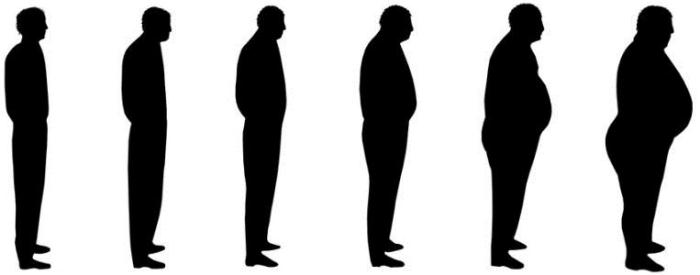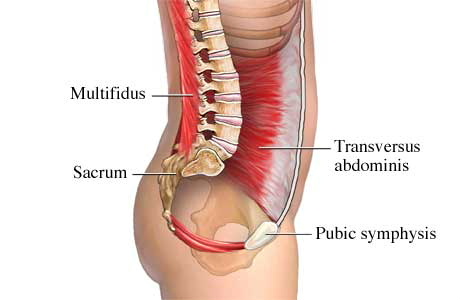0203 397 8891
Open today: 9:00am - 6:00pm
Open today: 9:00am - 6:00pm

by Matthew Powell
A Body Aware Specialist
Well, there’s no really easy way to say this, but this month I’m cutting to the chase. 4 times out of 5 the problem with our backs is our fronts, especially in men. Excess weight around the abdomen puts a huge amount of strain on the back and often leads to postural change in the form of lordosis – lower back arching.
I will be discussing the core, smoking, correct bending and lifting, and the relationship between high heels and lower backs, but if we are overweight, if the physics of the mid-section means that the back bears too much of the load, then we have to begin to redress that balance if any head way is to be made.
If you’re more person 6 than person 1 in the silhouette above however, let’s look at some other common causes and some remedies for them.
The first place to go is to the core, the fabled group of muscles that we hear about all too often in gyms, group exercise classes, and work out DVD’s. “All you have to do is engage your core,” right? Well, that’s exactly it. If the core is weak, or worse not firing at all, the brain has forgotten that it exists. It has effectively broken up with the core, all communications have stopped and the wonderful, exciting, breath taking times they once spent together are but a distant memory. They don’t phone, they certainly don’t e-mail and, at the time of writing, the brain had deleted the core from Facebook. Bad times.
The core is actually made up of all muscles attaching to the spine between the hips and the top of the shoulders, but to make it a little easier, we’re going to look at the deep, postural muscles of the mid-section. (See below)

How do we engage these muscles? Well first we have to sit them in a room with the brain and make them discuss their issues. Try this for starters:
If you continue to work these muscles, engaging them, holding and relaxing, your brain will slowly wake up to them and be able to fire them both autonomously and on command.
Next time you are in the company of a toddler or new-to-walking baby, put something on the floor for them to pick up and see how they drop down to get it (make sure you know the child or the police will be involved). They will never bend from the hips, simply squat down and stand again. Work based health and safety drills these principals into those who need it to bend from the knees not the hips but try to take this home. When you’re loading the dishwasher, washing your face, or picking up your work bag, bend correctly and soon it will become second nature.
If you’re ever dragging something along the floor, push it, don’t pull it. It will use the muscles at the front of your body rather than risk those at the back.
Posture is a huge concern in 21st century western society. Computers, cars, desk work and alike are all factors in promoting rounded shoulders and a hunched back. In a nut shell:
| - Stand up as tall as you were meant to be, lift the crown of your head to the sky and tuck your chin in - Remember those core muscles above, engage them, not 100%, just enough to know they're there - Outer spiral (rotate) your arms so the inside of your elbows are facing away from each other, this will flatten your shoulders - Inner spiral (rotate) your hands so the forefinger is facing forwards and the little finger backwards, your palms now facing each other. Hold this pose and begin to move |
 |
Only when you must, not as a rule. Think of the above, the whole mechanics are put out when the heel is so much higher than the toes as the shoe aims to push you forwards and you have to lean back to compensate.
More and more studies are beginning to show the correlation between smoking and degenerative discs in the back. You may also get healthier by stopping but I’m unsure about such outlandish claims.
Follow me @mattypowell or “LIKE” the Quantum Physiques Facebook page.
Join our mailing list to receive the latest news, offers & £50 off your first holiday.